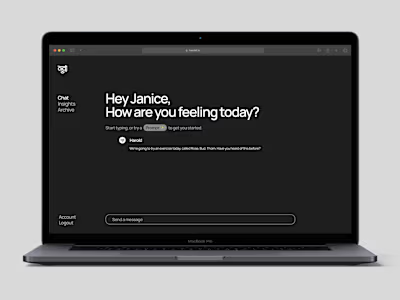Audioboard | Plugin Design
Audioboard is a passion project of mine that I've been working on for a while. The concept is simple - it's like Pinterest, but for musicians.
Playing in bands over my teens and early 20s, I found that it was a nightmare trying to send specific samples to people and would often have crazy messages like "listen to the weird thing in the background at 0:30", which was often met with "I don't know what you're talking about" or "I don't have spotify".
Audioboard would be a single platform that is designed for listening to references for musicians, and could be a way for creators to help monetise music in the new, digital era.
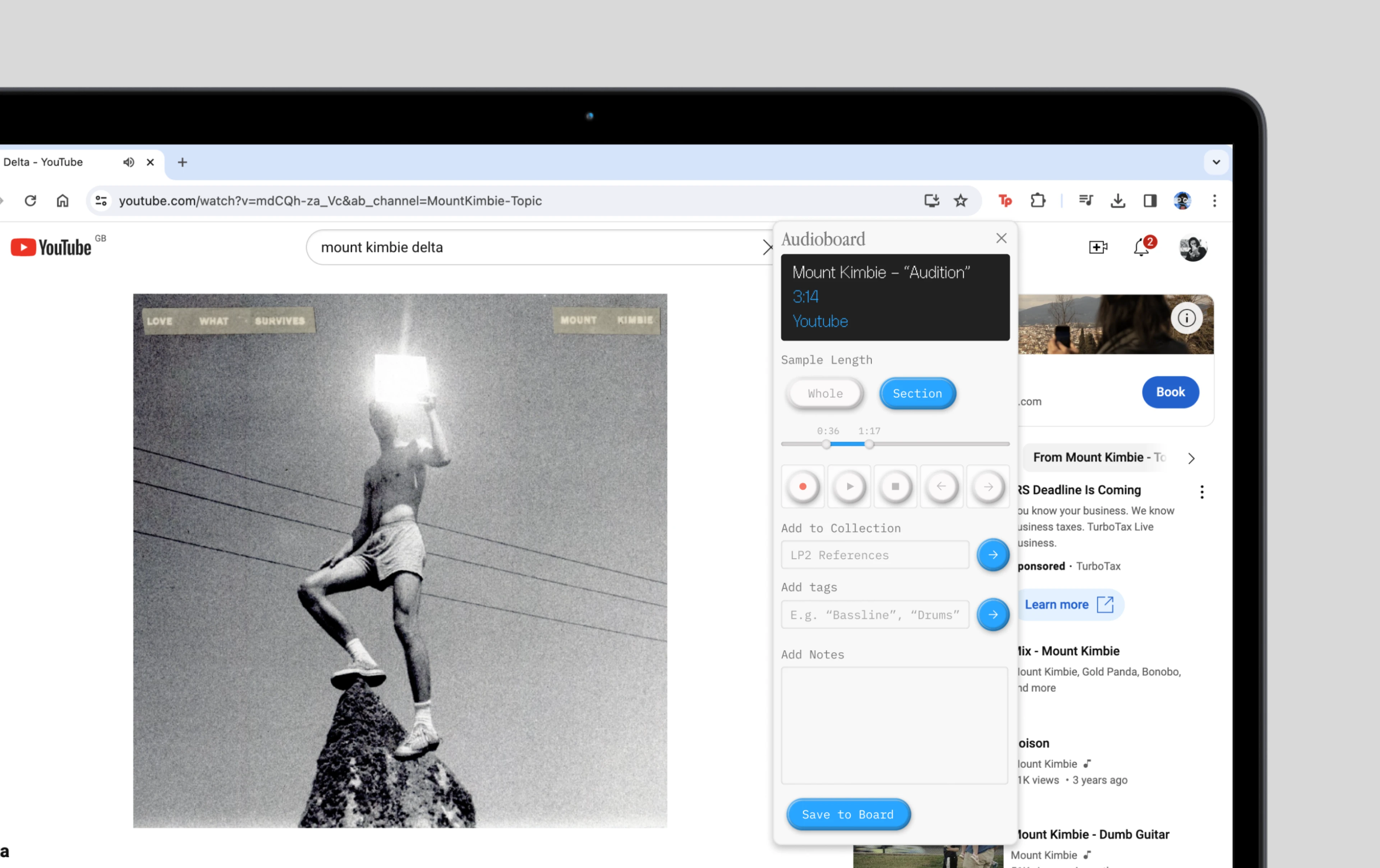
Artists and designers across all fields have a variety of different methods for retaining their inspiration. With sites like Pinterest and savee.it, there’s no shortage of places for artists to find, organise and retain their inspiration.
When it comes to musicians and producers, this is slightly different - the closest thing there is is Spotify or Youtube playlists, and it is increasingly difficult to mark references to audio, and the artists have to reference an entire song without being able to add comments or mark down and isolate specific moments in the song, or specific sounds.
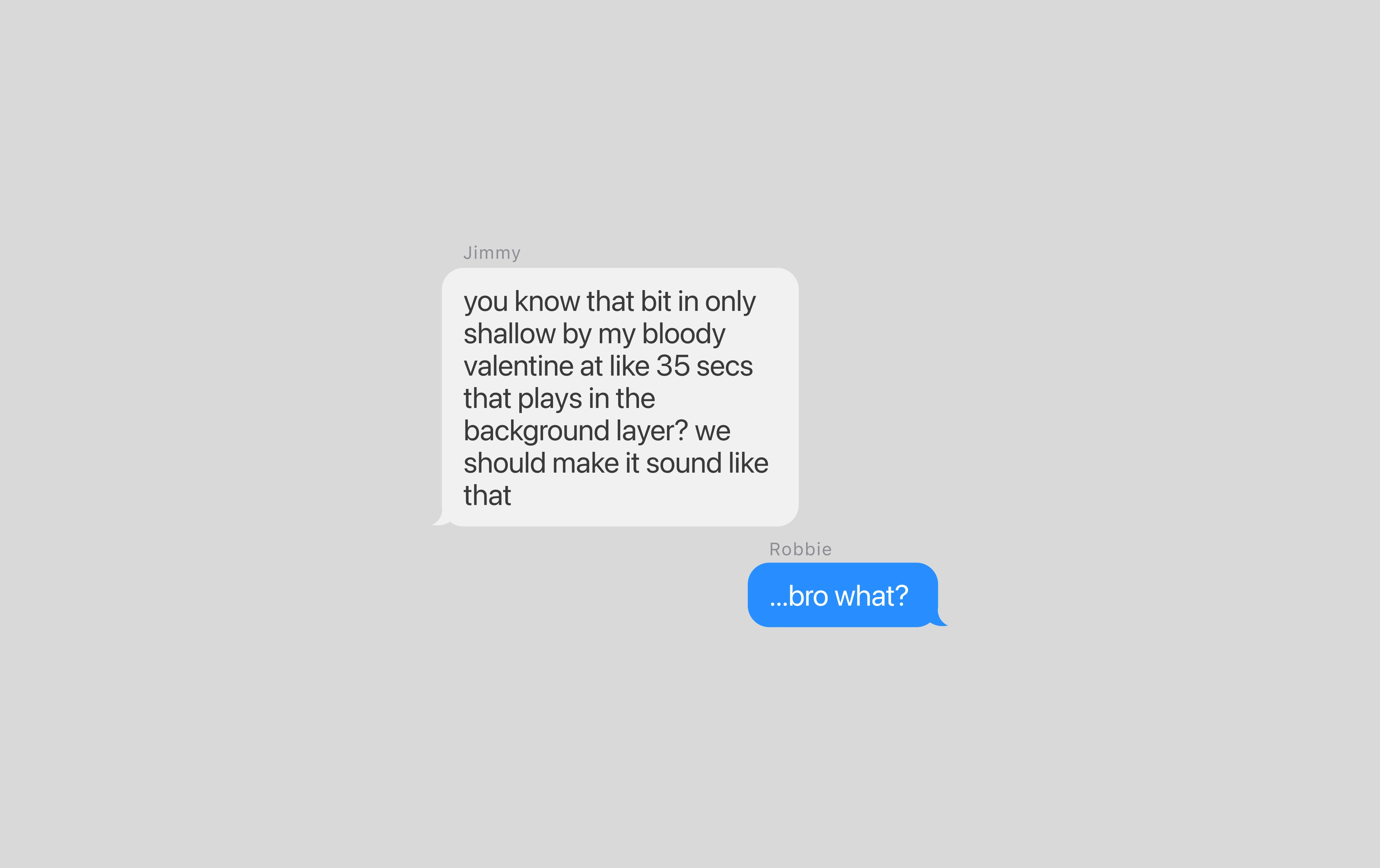
Allowing pinpoint accuracy for notes on songs.
Saving time for producers is crucial - they don't have the time to be spent listening to entire playlists of references for one tiny part. With Audioboard we implemented a scrubbing feature that allows users to sample small parts of songs, and only send the relevant sections, as well as whole songs. This helps avoid the confusion as shown above - you can pinpoint it exactly and send it as a clip.
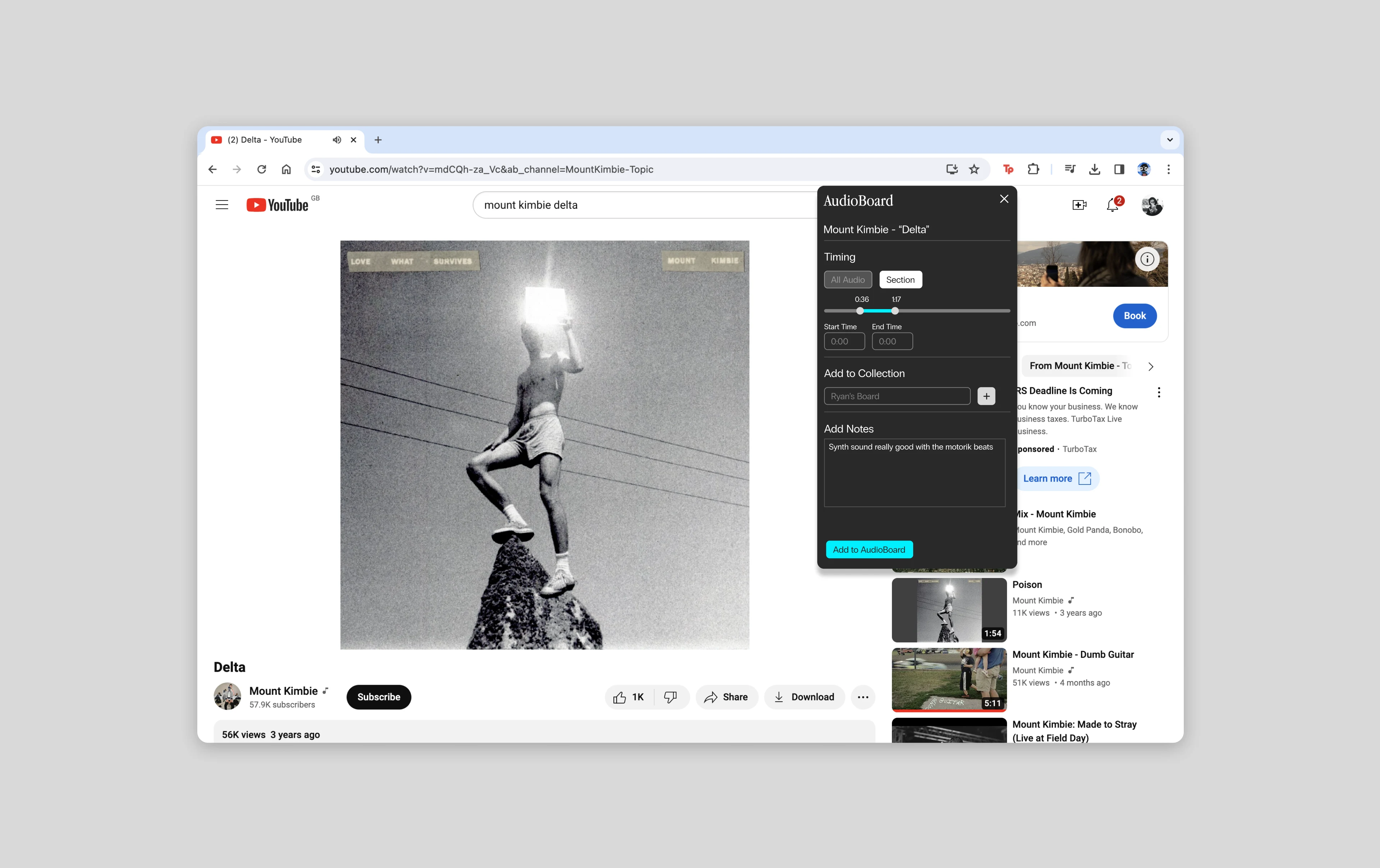
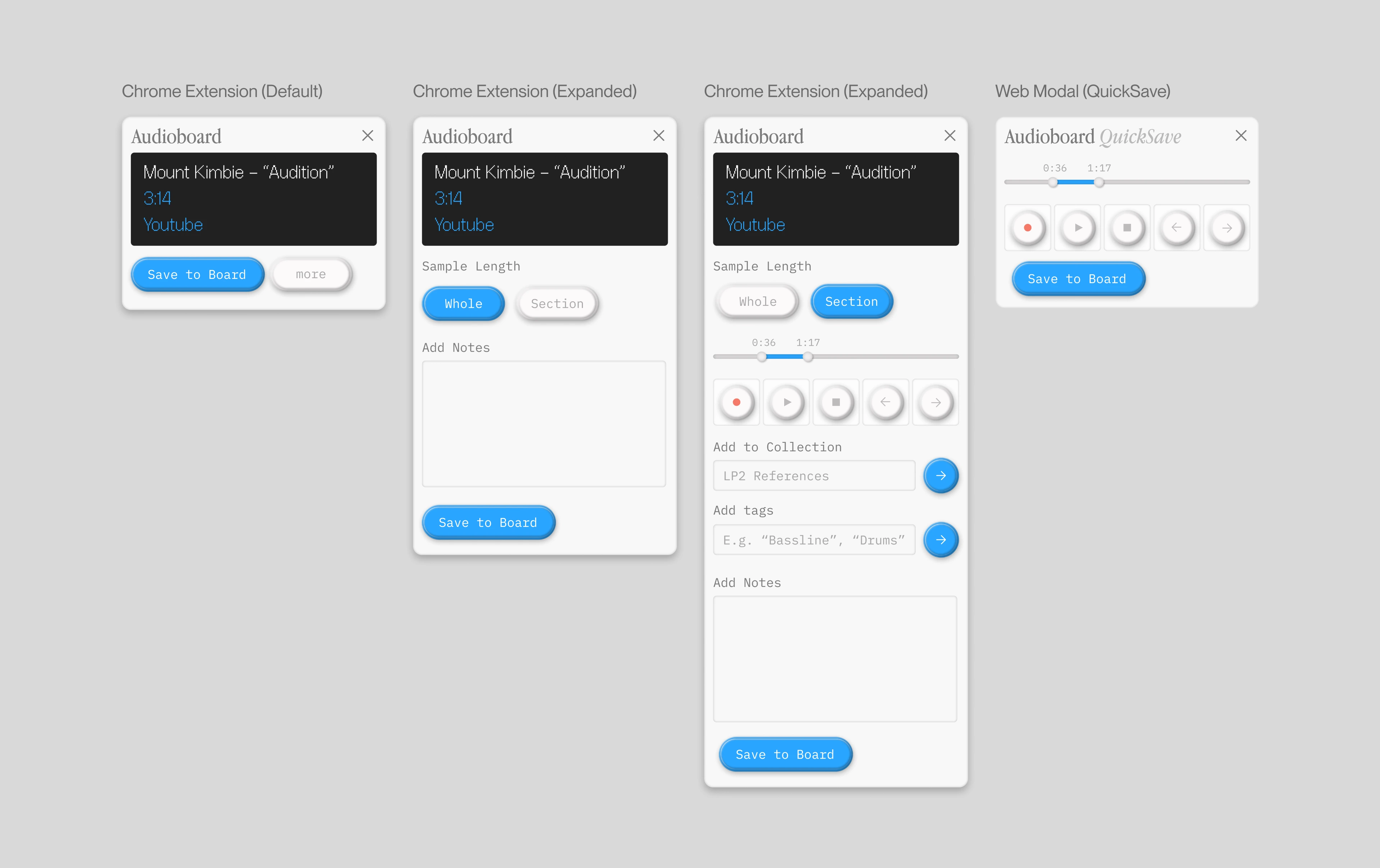
Redesigning the UI for familiarity.
By testing the product using a figma prototype, we knew that it:
→ Was useful for artists and producers.
→ Was easy to use and understand.
However, they did have a few concerns:
→ It could mimic familiar practices from hardware/software.
→ It could have a button that is just held for a section to get small sections versus scrubbing
→ It could benefit from being able to isolate the instruments.
We redesigned the interface based on familiar hardware practices. The target audience are familiar with using recording interfaces, the iPhone voice notes UI and record and CD players. So we returned to the drawing board to see what we could implement, taking cues from Teenage Engineering, Akai, and Ableton.
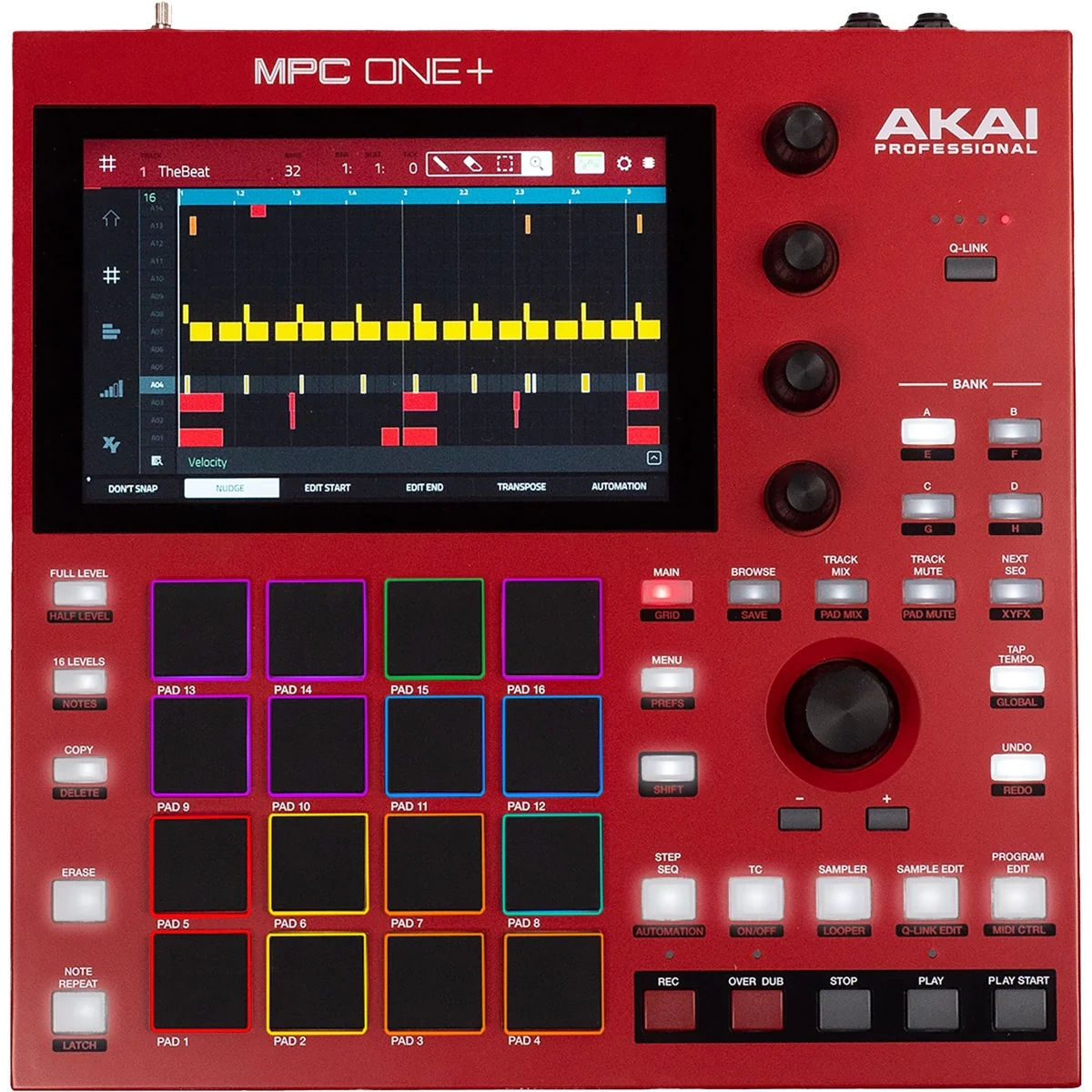
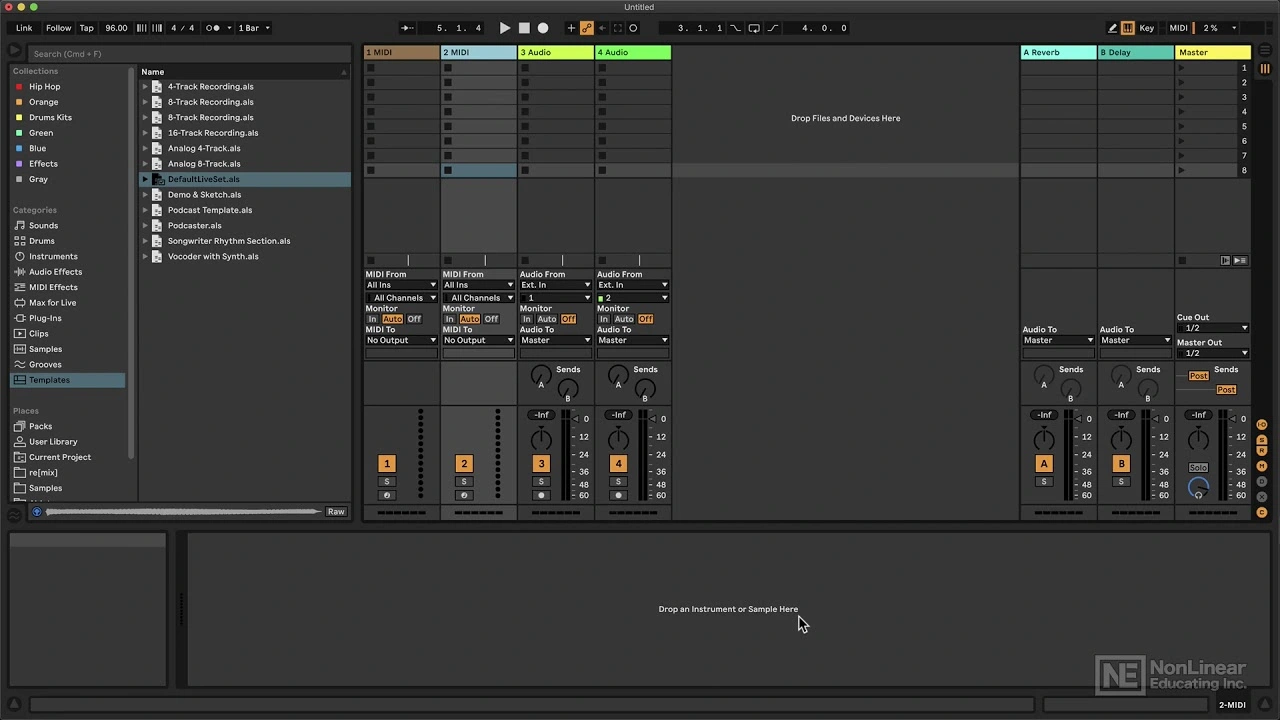
Scope for further Accuracy, and addressing Piracy Concerns
The software is designed to be used for referential purposes, rather than to directly sample from, which is a concern with the isolation of instruments. To avoid this, we would not allow download of the mp3 or wav files.
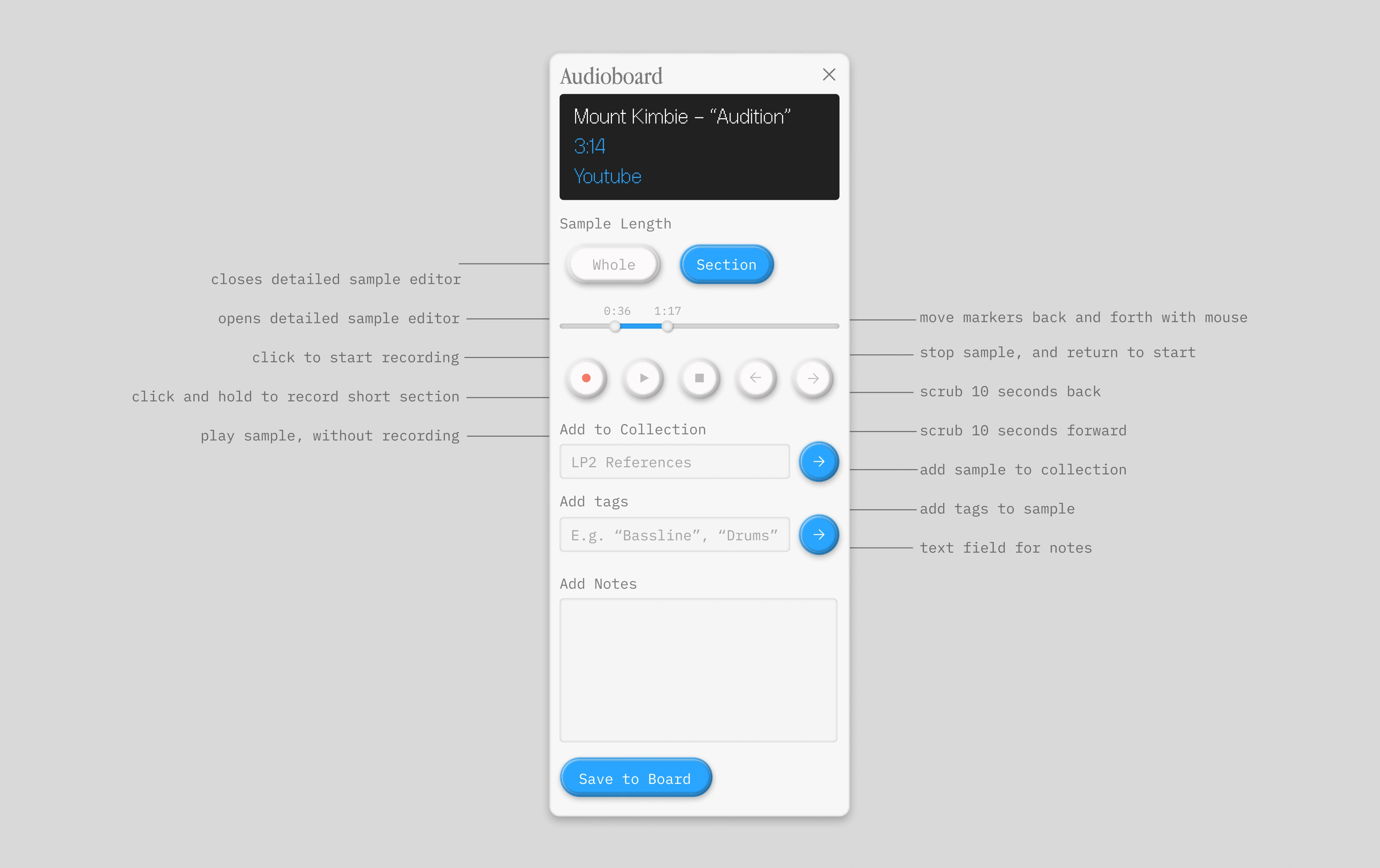


Creating a Library and sorting References
Like Pinterest and savee.it, we felt from the start it was important to offer collections so that references could be sorted easily. Producers and artists will often be working on multiple songs or albums at once, and the ability to sort the references would further streamline their process.
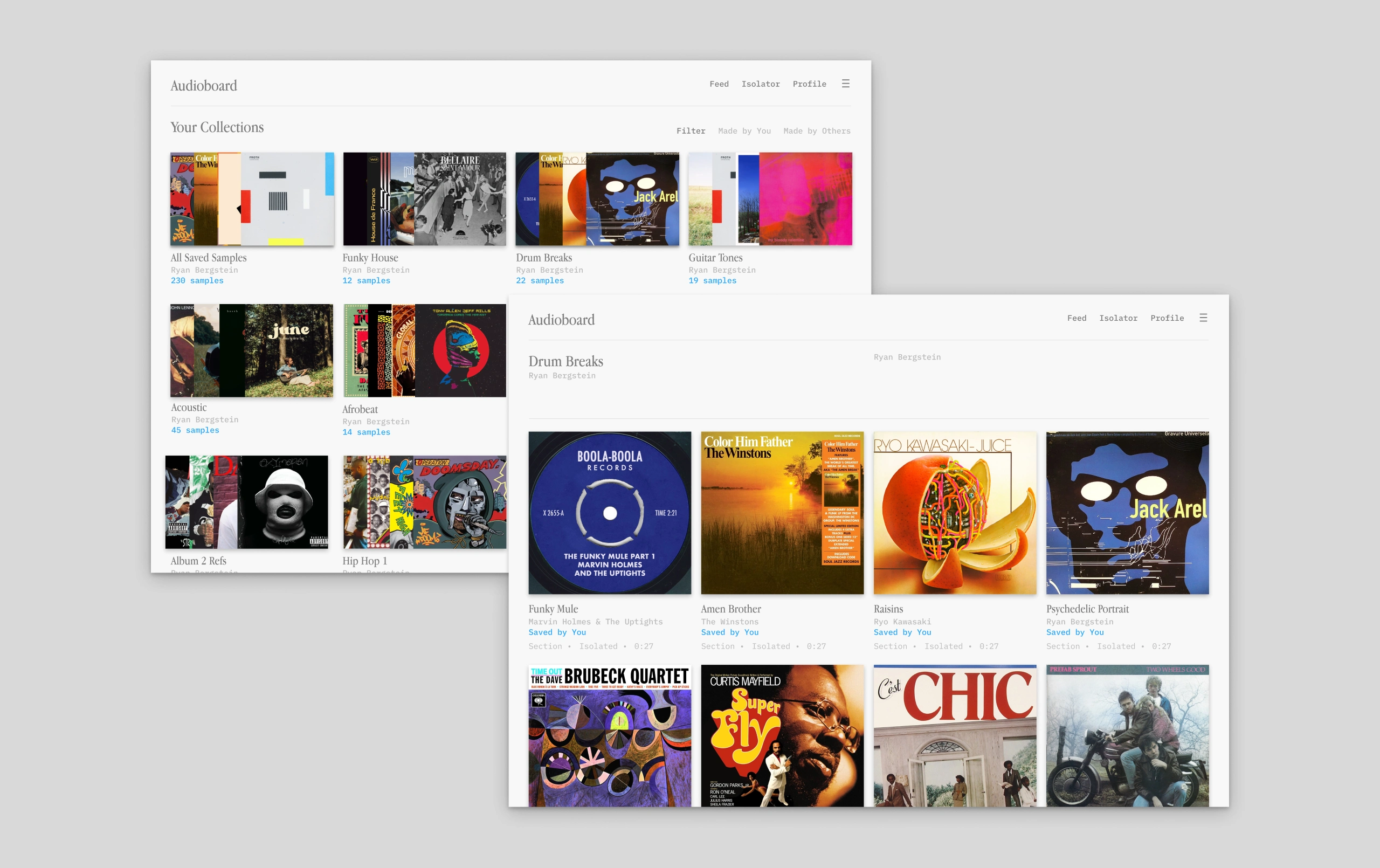
Proposed as a paid feature, the Isolator allows user to go further in depth with their samples, and separating each instrument. This allows users to get further specific in their references for things like guitar tones, riffs, and basslines, as well as drum patterns.

The isolator was intentionally designed to mimic the interfaces used by Ableton, and GarageBand.
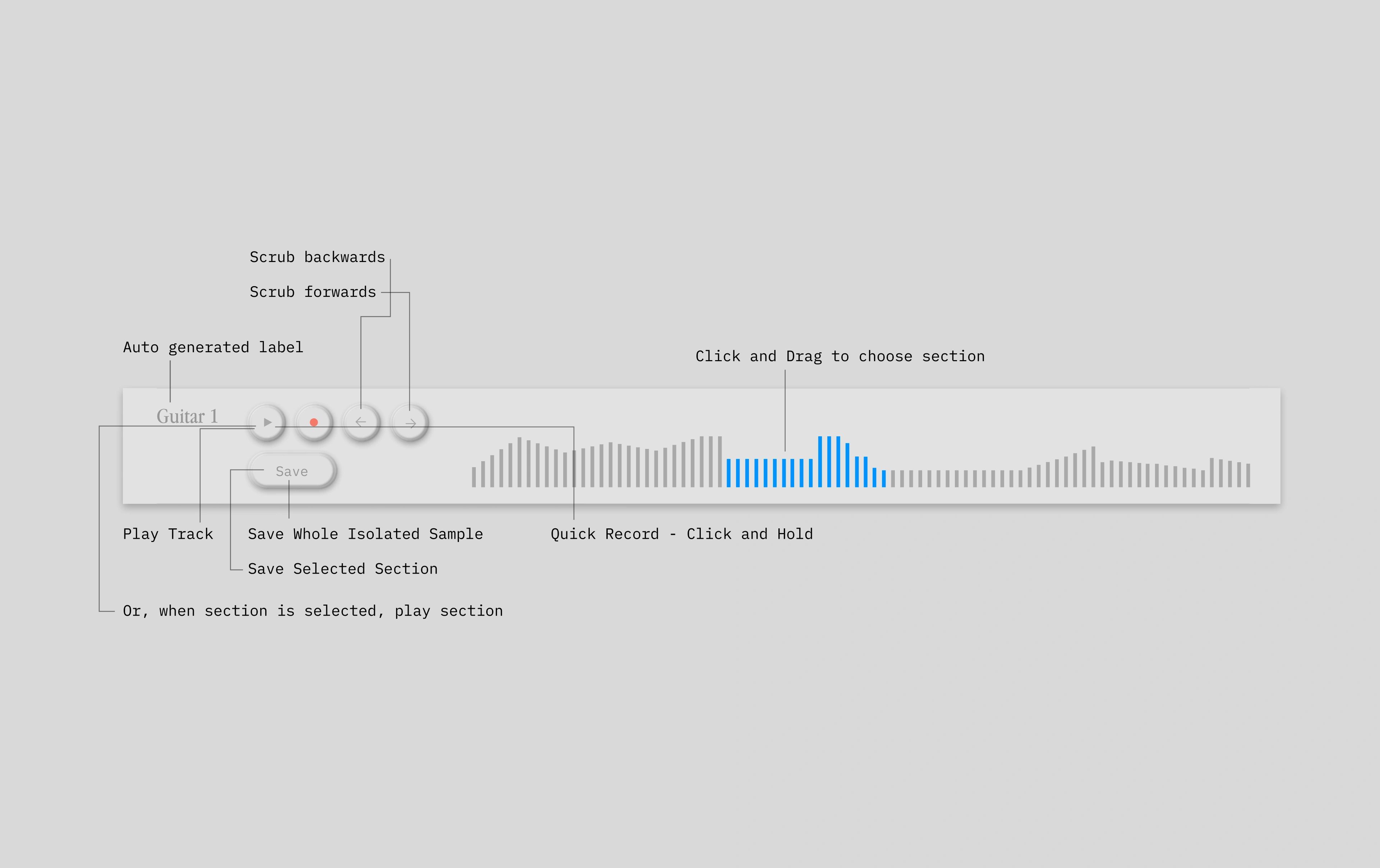
Like this project
Posted Apr 24, 2024
A tool for music producers and artists to build mood boards from songs on Youtube, Soundcloud and other sites, to use as reference in production and writing.
Likes
0
Views
15




